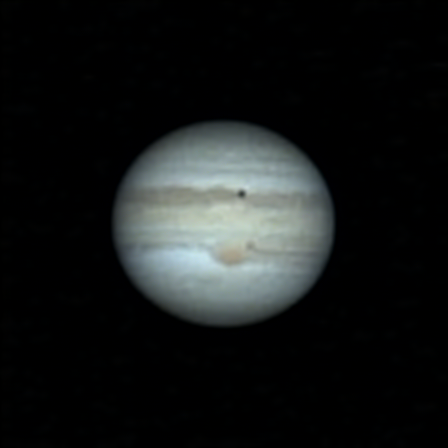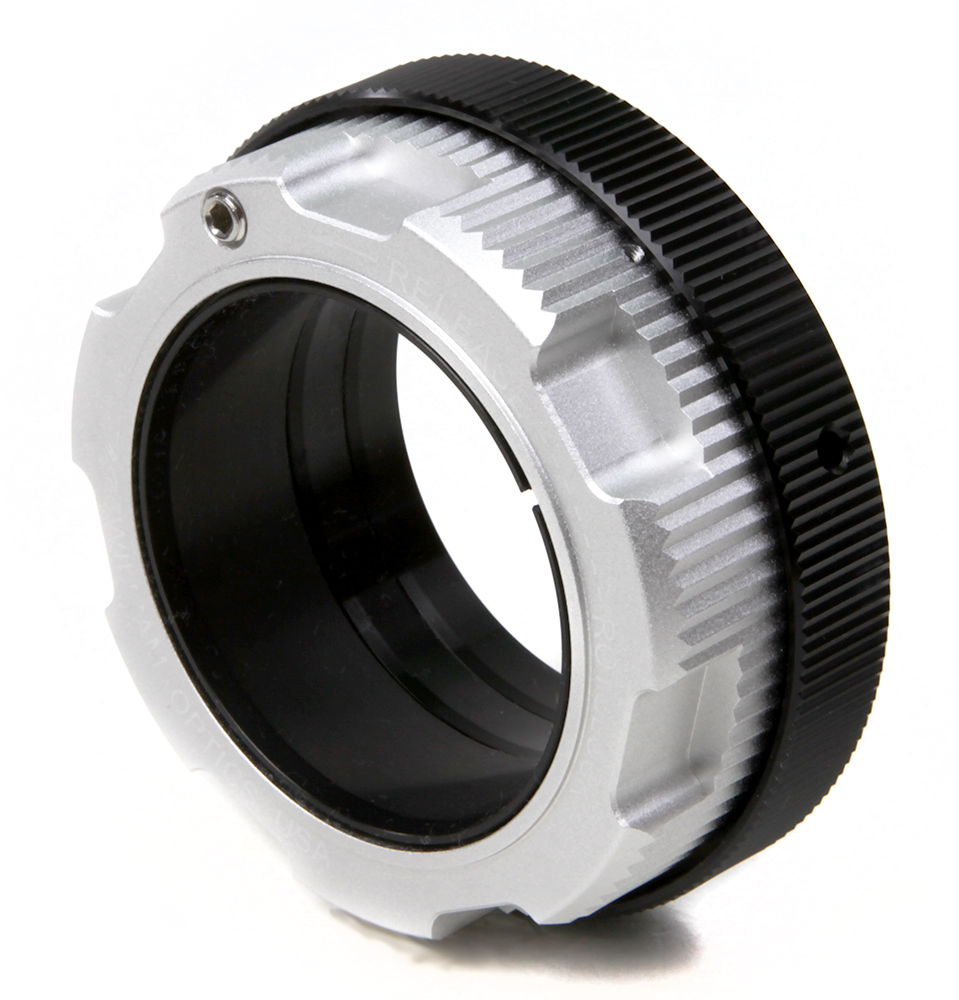-
Posts
10,662 -
Joined
-
Last visited
-
Days Won
32
Content Type
Profiles
Forums
Gallery
Events
Blogs
Posts posted by Stub Mandrel
-
-
-
-
Service interval : 10 billion years. Should be good for a few miles yet.
-
 2
2
-
-
11 hours ago, Adam J said:
Micro lensing would show a pattern as opposed to just larger stars and CCDs also have micro-lenses, my guess would be something more along the lines of too high a gain setting. Would be interesting if you could post an example.
There are some startling examples on Cloudy Nights - patterns of circles radiation out from stars. They seem to be associated with a combination of filter spacing and micro-lenses.

-
13 hours ago, newbie alert said:
the huge files that's needed to store the data( a friend used a terabyte on 1 image) then I'd be interested as yes it will be the future..
I think this must be because the ease of CMOS imaging tempts people to tackle ever more challenging images.
Even with short exposures I rarely manage more than 4GB of data in a night with a DSLR, which produces similar file sizes.
-
As awesome as ever!
With about five years to save up, can you remind me what your imaging rig is - I know you have a C14, but what's the rest of your imaging train?
-
4 hours ago, U Cyg said:
Nice images considering the seeing conditions. Jupiter was very bad here but strangely the seeing for Saturn was much calmer.
Angie
With them so low I think local 'hot spots' make a big difference to the seeing.
-
 1
1
-
-
2 hours ago, astroman001 said:
Nice, image. Makes you realise what a great job the software does to pull that image from the wobbly fuzzball on the screen!
Peter
It is incredible. I am excited about what might will possible when the planets are higher up in the sky.
-
Hi, @iwols, a 150PL on EQ5, unguided. ZWO ASI120MC camera. Between scope and camera are: X3 barlow element, filterwheel set to IR/UV cut filter (probably not doing anything) and, most importantly, a ZWO ADC set almost to 'max'. I focused using a Bahtinov mask on a bright star.
I took lots of runs of 5,000 frames for the planets, but the moon one for the above was only 1000 or so. For both Saturn and Jupiter most results were pretty similar but then there were one or two images noticeably better than the rest.
In SharpCap I found it was necessary to use 100% gain and accept longer exposures and hope for periods of better seeing - at f24 you really aren't getting a very bright image!
Pre-processed in PIPP without debayer, stretched to 90%. debayered and stacked in AS!3. Post process for planets was simple - Lucy Richardson deconvolution followed by 100% micro-contrast in Astra Image.
See here for what the worst of the raw video was like. I think the 'secret' is to capture data as if the conditions were perfect and not accept poor focus etc. just because the seeing is poor:
-
-
I almost didn't bother with these after seeing @Aussie Dave's recent Saturn - before I noticed he's 'aussie' Dave and not having to struggle with the planet being at 15 degree altitude, camera at 24-degrees (temperature) and the seeing being like boiling water. But tehre were some moments of slightly better seeing, scroll down for the results
First run at Jupiter was ironically one of the best, and caught the red spot and Ioop with it's shadow just on the point of leaving the disk:

One of the last Saturn's was best as it neared its 'highest' point:

Finally, a rather crummy image of Saturn, a stack of nine long-exposure frames (the darn planet then disappeared behind a roof!) Definitely Titan, Dione and Rhea, I'm sure Tethys is there and even a hint of Mimas! Wait until it is higher up and I can get a thousand frames!


-
 12
12
-
-
Next galaxy season I think I might do some 'galaxy hunting' with the ASI120MC - and fitting cooling to it.
Live stacking alongside collecting imaging data kills two birds with one stone!
-
Last night I did some imaging of Jupiter and Saturn, although I find the 'observation' on the laptop equally rewarding. Good views of both planets and their moons, including three of Saturn's moons.
Finished off with a test on M27 doing 15 second exposures -I have tried this before but wanted to practice in the hope of doing a demo on Friday night. The blue parts were very obvious.
I saved a 44 frame stack as a FITS in Sharpcap, and processed with a fairly basic stretch, balance curves and denoise. All unguided. I can't see any conflict between EEA and imaging when you are doing it this way.

-
 8
8
-
-
Interesting, but one problem mayl be that epoxy is used to encapsulate a lot of electronics - it may attack other parts of the assembly 😞
-
 1
1
-
-
40 minutes ago, Ross1204 said:
Hi,
Having just seen this on Flo's website I was thinking whether this would be a suitable solution for the 130pds.
I have already tried the M54 Baader click lock which placed the camera just a tad too high to find focus but looking at the pictures I believe this maybe slightly smaller.
Does anyone have any experience with this lock or any idea if it may work?
https://www.firstlightoptics.com/adapters/william-optics-2-rotolock-for-zenithstar-61-m54.html#
How are you attaching the camera?
A T2 to 2" nosepiece and a T2 to Canon adaptor should work just dandy.
I use the 2" coma corrector with a T2 adaptor.
If you use a 1.25" nosepiece using a 2" to 1.25" adaptor as well may be adding too much length.
-
Do you have 'back page Co. 4?"
-
 1
1
-
-
Thin cloud here, forecast to disappear, hopefully -this could be my night to get this year's Saturn?
-
 1
1
-
-
1 hour ago, Gina said:
It was an enormous risk landing on the moon - the ground could have been metres deep in dust where they landed.
Possibly, but the surveyor landings gave them a fair degree of confidence that they wouldn't simply sink into a sea of dust - they also had abort points within seconds and minutes of landing, if necessary.
-
 1
1
-
-
1 hour ago, Gfamily said:
The distance to the moon can be measured fairly straightforwardly by trigonometry from the earth's surface, even without radar techniques.
The moon is about 30 earth-diameters away, much closer than we tend to think!
-
1 hour ago, JOC said:
1. That tricky bit of the manoeuvre when they had to get the lunar module bit to disconnect and turn-around in space and re-connect the right way around to approach the moon. Why didn't they just build it that way round to begin with and give the astronauts swivel chairs if they needed to see where they were going?
With every ounce being trimmed and very limited space swivel chairs would not have been practical - also because of the heat shield it's only practical to have windows in the conical end of the Command Module.
Most importantly, however, the astronauts needed to be right on top of the Saturn V at launch so the escape rocket would be able to pull the command module free in an emergency, leaving empty service module and lunar module to their fate. In fact, they didn't have a view at all until after the escape rocket with its cone covering the command module jettisoned around stage 2 separation.
Another consideration is that the complex mechanism and critical seals for the docking mechanism could easily have been damaged by the extreme acceleration and vibration of launch if the two parts were connected from the start.
-
 1
1
-
-
I set an alarm to wake me up in the small hours so I could listen to the moonwalk on 'Apollo real time'. Just been through Eagle's lift off and return to orbit.
-
 1
1
-
-
I spotted something NASA missed in all their plans - I 've been listening to 'Apollo 11 in real time' and when Neil and Buzz returned after the moonwalk, they removed the PLSS antennae from their suits as planned and stow them - these are what they used to communicate with each other and CAPCOM from the surface. Then fifteen anxious minutes for Houston until they realise why they can't contact the astronauts, as they haven't yet been able to activate the LMs comms.
-
 1
1
-
-
5 hours ago, Chriske said:
Coffee...?😳
Covfefe...? 😉
-
 1
1
-
-
I bought a very well written and illustrated Apollo 11 special from WH Smiths. About £6 but thick and ad free.
Heads up, visit https://apolloinrealtime.org/11/
If you follow it as live+50 years the landing process starts in about 30 minutes.
-
 1
1
-






















5x Barlow 1.25 lens confusion
in Getting Started Equipment Help and Advice
Posted
I wouldn';t expect (from experience) a cheaop x5 barlow to be any good. There are 'mid price' x3 barlows that are worth using. My Revelation Astro ED Barlow (x3) is very nice. I have an x3 insert of 'unknown origin' that came from Astroboot and it performs very well for imaging.